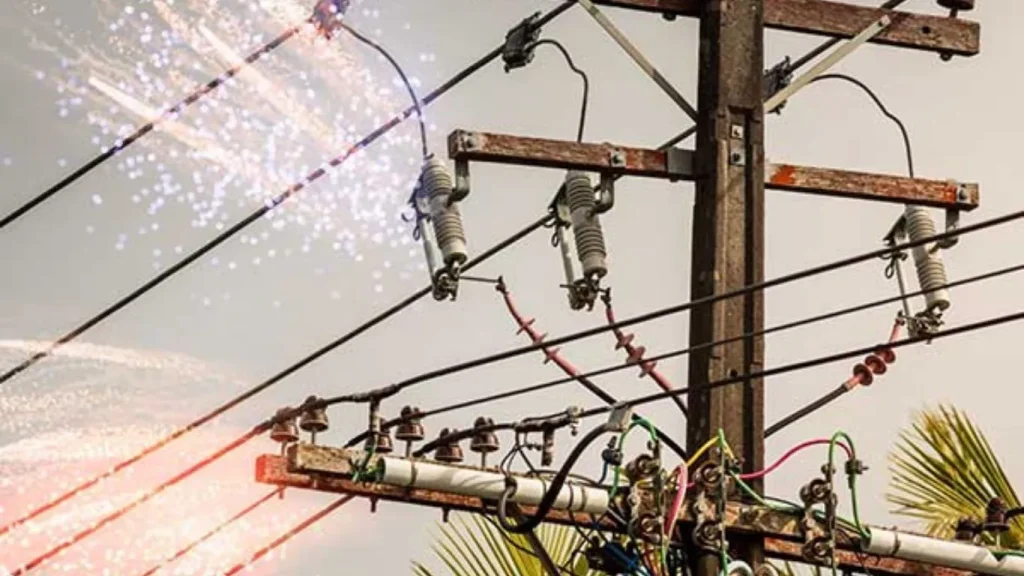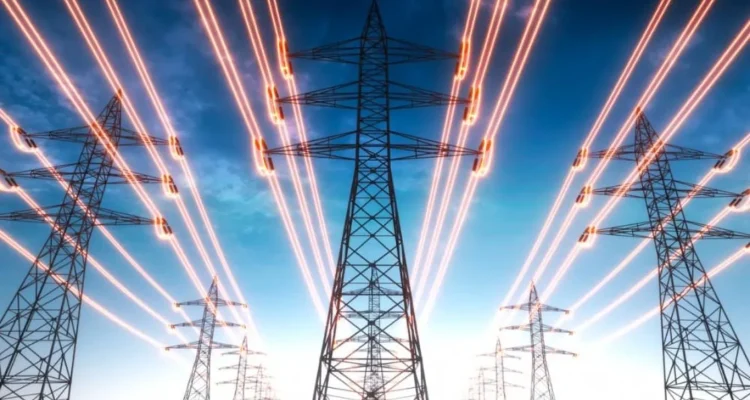Introduction to Power Surges
We’ve all been there—you’re watching TV, and suddenly, the lights flicker, and your electronics shut down. What just happened? Chances are, you’ve experienced a power surge. But what exactly causes these mysterious electrical events, and why should you care? Power surges are more than just a quick annoyance. They can severely damage your electronics, lead to costly repairs, and even pose a fire hazard if not properly managed.

What is a Power Surge?
A power surge occurs when there is a sudden increase in the electrical current flowing through your home’s wiring. Think of it like a wave crashing through your system, sending a jolt of excess electricity into your devices. This surge can last for just a fraction of a second but still have long-lasting effects. Common signs of a power surge include flickering lights, sudden shutdowns of electronics, and in extreme cases, sparks or overheating in outlets.
How Power Surges Affect Electronics
Power surges can wreak havoc on your electronics, especially sensitive devices like computers, TVs, and kitchen appliances. While some surges can cause immediate and obvious damage, others work more quietly, degrading the lifespan of your devices over time. After multiple small surges, you might notice your appliances performing poorly or failing altogether.
Immediate Damage
When a large surge hits, it can fry circuit boards, damage internal components, and render appliances unusable. This is especially common when high-powered devices like air conditioners or refrigerators are running during a surge.
Long-term Effects
Even if your devices seem fine after a small surge, the repeated exposure to excess current can wear them down over time. This silent damage is harder to detect but can lead to slower performance, malfunctions, or premature breakdowns.
Causes of Power Surges
Now that we know what a power surge is and how it can affect your electronics, let’s dive into the main causes of power surges.
Lightning Strikes
One of the most dramatic causes of power surges is a lightning strike. When lightning strikes near a power line or your home, it sends a massive surge of electricity through the system. Even though lightning strikes are rare, the damage they cause can be severe, potentially frying all the devices in your home in a split second. If you live in an area prone to thunderstorms, you may want to take extra precautions, such as unplugging devices during storms.
Electrical Overloads
Electrical overloads happen when too many devices are drawing power from a single circuit. This is common in homes where multiple appliances, like microwaves, hair dryers, and air conditioners, are running simultaneously. When the demand for electricity exceeds the circuit’s capacity, it can cause a surge. To avoid this, try distributing your appliances across different circuits and not overloading any single one.
Faulty Wiring
Outdated or damaged wiring can easily lead to power surges. Faulty wiring doesn’t conduct electricity as efficiently, which can cause sudden spikes in current. If you notice flickering lights, buzzing sounds, or frequent tripping of circuit breakers, your home may have faulty wiring that needs to be addressed by a licensed electrician.
Power Outages
After a power outage, when electricity is restored, it can come back with a surge of current. This sudden influx of electricity can overwhelm your home’s system, especially if multiple devices are trying to power on simultaneously. Installing surge protectors or unplugging devices during outages can help mitigate this risk.
Utility Company Issues
Sometimes, surges originate from the utility company itself. Fluctuations in the power grid or maintenance work can send excess voltage to your home. While you can’t control utility issues, having proper surge protection can safeguard your electronics from these external problems.
Internal vs. External Power Surges
Power surges can be categorized as internal or external. External surges come from outside your home, such as lightning strikes or utility issues. Internal surges, on the other hand, occur within your home and are typically caused by malfunctioning appliances or overloaded circuits. While external surges are often more dangerous, internal surges happen more frequently, which is why surge protection is important for both.
Surge Protectors: Do They Really Work?
Surge protectors are a crucial line of defense against power surges, but do they really work? The answer is yes—if you choose the right one. Surge protectors are designed to absorb excess electricity and divert it away from your devices, keeping them safe. However, not all surge protectors are created equal. When shopping for one, look for features like a high joule rating, multiple outlets, and safety certifications to ensure you’re getting the best protection.
How to Prevent Power Surges
While you can’t always prevent a power surge, there are steps you can take to minimize the risk and protect your home.
Use Surge Protectors
The easiest way to protect your electronics is by using surge protectors. Make sure every expensive or sensitive device is plugged into one. Surge protectors come in various types, from basic power strips to more advanced models with built-in circuit breakers.
Unplug Devices During Storms
If you know a storm is coming, unplugging your electronics is the safest way to avoid damage from lightning-induced surges. While this may seem like a hassle, it’s a small price to pay compared to the cost of replacing your devices.
Regular Electrical Inspections
Have your home’s electrical system inspected regularly, especially if you live in an older home. Faulty wiring is a common cause of power surges, and regular maintenance can catch problems before they lead to bigger issues.
Install Whole-House Surge Protectors
For comprehensive protection, consider installing a whole-house surge protector. These devices are installed at the main electrical panel and can protect your entire home from surges.
The Cost of Ignoring Power Surges
Ignoring power surges can lead to expensive repairs, device replacements, and even safety risks. In extreme cases, surges can cause electrical fires, which endanger your home and family.
What to Do After a Power Surge
If your home experiences a power surge, check all your appliances for signs of damage. If something isn’t working correctly, you may need to have it repaired or replaced. You should also consider filing an insurance claim if the surge caused significant damage to your electronics.
FAQs
What’s the most common cause of power surges?
The most common cause is internal surges, often from malfunctioning appliances or overloaded circuits.
Can power surges damage my appliances even if I don’t notice them?
Yes, small surges can gradually degrade the lifespan of your appliances over time.
How can I tell if my home has experienced a power surge?
Common signs include flickering lights, devices that suddenly shut off, or damaged electronics.
Is it necessary to have a surge protector for every device?
While it’s not required for every device, it’s highly recommended for valuable or sensitive electronics like computers and TVs.
Can power surges be prevented completely?
Unfortunately, no. However, using surge protectors and taking preventive steps can significantly reduce the risk.

Conclusion
Power surges may seem like a small inconvenience, but they can have big consequences for your home and electronics. By understanding the causes of power surges and taking steps to prevent them, you can protect your devices, save money, and ensure your home is safe.


Congratulation!